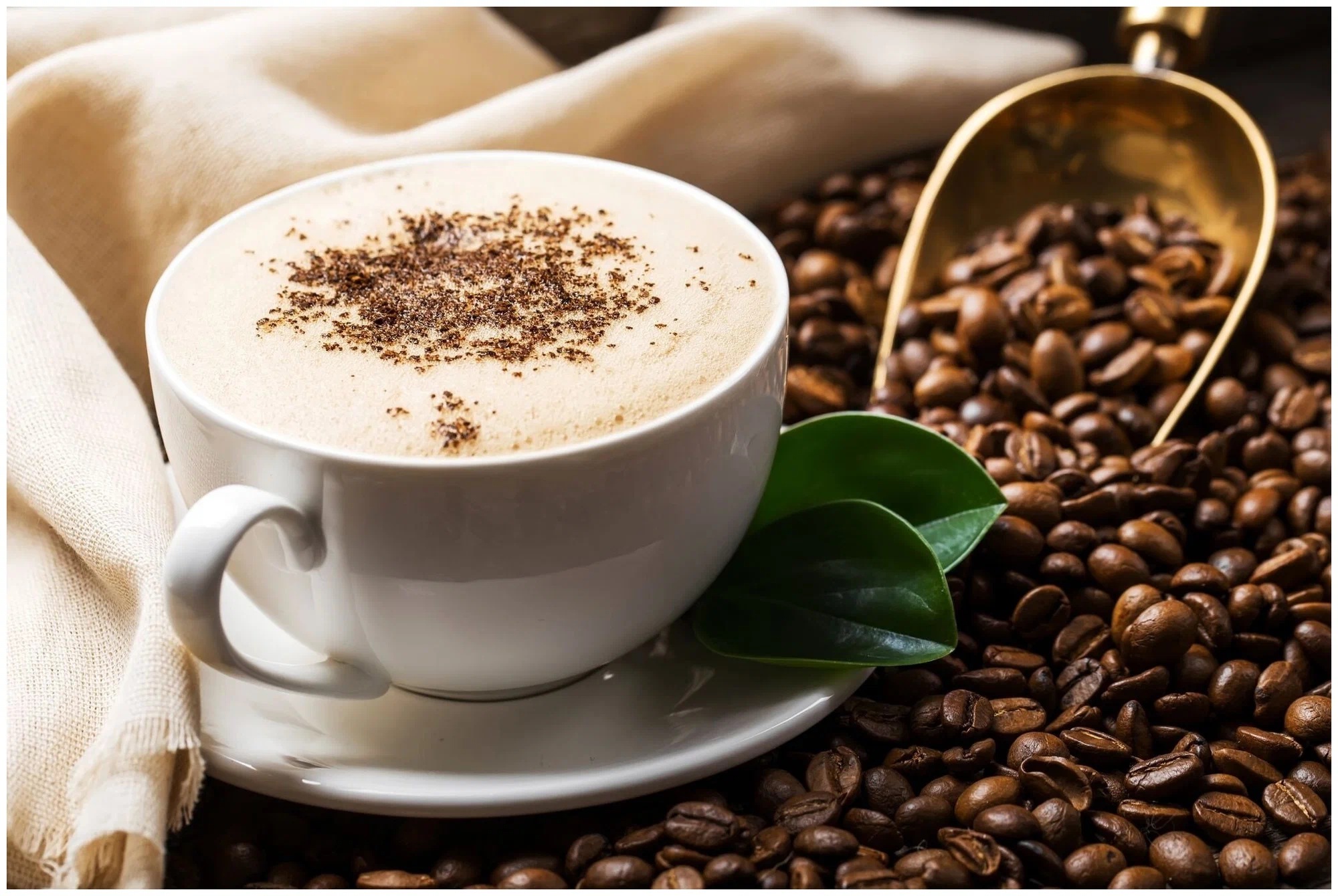
What is White Coffee and How is it Different from Regular Coffee?
Table of Contents
- What is White Coffee?
- How is White Coffee Made?
- 1. The Coffee Bean Selection
- 2. The Roasting Process
- 3. Grinding
- 4. Brewing
- Taste Profile: How White Coffee Differs from Regular Coffee
- 1. White Coffee Flavor
- 2. Regular Coffee Flavor
- Nutritional Differences Between White Coffee and Regular Coffee
- 1. Caffeine Content
- 2. Antioxidants
- 3. Acidity
- Health Benefits of White Coffee
- How to Brew the Perfect Cup of White Coffee
- Final Thoughts
What is White Coffee and How is it Different from Regular Coffee?
- azeem memon
- 02-10-2024
- 23-07-2025
- 1514 views
- coffeepedia

Coffee lovers around the world are familiar with the usual array of brews—espresso, cappuccino, cold brew, and drip coffee—but fewer have experienced or even heard of white coffee. Though its name might suggest it involves milk or cream, white coffee is not defined by the addition of dairy but by its unique roasting method and flavor profile. White coffee is gaining popularity due to its smooth taste, distinct flavor, and potential health benefits. But what exactly is white coffee, and how does it differ from the regular cup of joe?
In this blog, we’ll dive deep into what white coffee is, how it’s made, and how it differs from regular coffee in terms of taste, roasting process, and nutritional content.
What is White Coffee?
White coffee is coffee made from beans that are roasted at a significantly lower temperature than regular coffee beans. Typically, coffee beans are roasted at around 450-480°F, but white coffee beans are roasted at approximately 325°F. This lower roasting temperature gives white coffee its lighter color, delicate flavor, and distinct aroma.
The term “white coffee” can be confusing because it’s used in different contexts around the world. In countries like Malaysia and Yemen, “white coffee” refers to coffee brewed with additives like margarine or other fats. However, in the U.S. and Europe, white coffee refers solely to the lightly roasted beans that preserve more of their natural oils and flavors.
How is White Coffee Made?
The key difference between white coffee and regular coffee lies in the roasting process. Here’s a breakdown of the key stages involved in making white coffee:
1. The Coffee Bean Selection
Both white and regular coffee can be made using various types of beans, including Arabica, Robusta, or blends. The type of bean used will impact the flavor, but it’s the roasting process that makes white coffee stand out.
2. The Roasting Process
For white coffee, the beans are roasted at a much lower temperature than regular coffee beans. Regular coffee is roasted until it turns a rich brown color, a process that brings out the oils and sugar content, creating the bold flavors that many coffee drinkers enjoy. White coffee beans, on the other hand, are only lightly roasted, preserving more of their natural oils and caffeine content.
3. Grinding
Because white coffee beans are harder due to the short roasting time, they are often ground into a very fine powder. Special grinders are sometimes required to break down these beans, as traditional grinders can struggle with the hardness of white coffee beans.
4. Brewing
White coffee can be brewed in a variety of methods, such as espresso, drip, or pour-over. Since it is often ground finely, brewing white coffee as an espresso shot tends to bring out its nuanced flavors. It pairs well with both sweeteners and milk but can also be enjoyed black for a pure flavor experience.
Taste Profile: How White Coffee Differs from Regular Coffee
One of the most noticeable differences between white coffee and regular coffee is its flavor. Since white coffee is roasted at lower temperatures, it retains more of its original, earthy flavors, while regular coffee, roasted at higher temperatures, develops a stronger, bolder taste. Here’s how they compare:
1. White Coffee Flavor
White coffee has a lighter, nutty flavor that is smoother and less bitter than regular coffee. The shorter roasting process preserves more of the bean’s natural sugars and acidity, creating a more delicate profile with subtle hints of nut, wheat, or even floral tones. Due to its milder taste, white coffee is a great option for people who don’t enjoy the bitterness of dark-roasted coffee.
2. Regular Coffee Flavor
Regular coffee has a rich, bold, and sometimes bitter flavor due to the caramelization of the bean’s sugars during the roasting process. Darker roasts develop strong, sometimes smoky flavors, which are popular in espresso and drip coffee. While some people prefer the intensity of a regular roast, others may find it too bitter compared to the mild nature of white coffee.
Nutritional Differences Between White Coffee and Regular Coffee
Another important factor to consider when comparing white coffee and regular coffee is their nutritional content. Due to the roasting process, white coffee has different levels of caffeine, antioxidants, and oils compared to regular coffee.
1. Caffeine Content
White coffee generally has more caffeine than regular coffee due to its shorter roasting time. Roasting coffee beans for a longer period reduces their caffeine levels slightly, which means white coffee can pack a more powerful caffeine punch.
2. Antioxidants
White coffee retains more antioxidants compared to regular coffee. The higher roasting temperatures of regular coffee can break down some of these beneficial compounds. This makes white coffee a popular choice for people who are looking for a more nutritious option.
3. Acidity
White coffee is generally lower in acidity than dark-roasted coffee. While the flavor itself can be more acidic due to the lack of caramelization, many people who suffer from acid reflux or stomach sensitivities find white coffee easier on the digestive system.
Health Benefits of White Coffee
Given its unique roasting process and retained natural compounds, white coffee comes with a few potential health benefits:
- Higher Antioxidant Levels
The lighter roast retains more antioxidants, which are known to help reduce inflammation and support overall health. - More Caffeine
For those looking for a bigger energy boost, white coffee’s higher caffeine content can provide an extra jolt without the need for multiple cups. - Easier on the Stomach
People who are sensitive to the acidity of regular coffee may find white coffee easier to digest and gentler on the stomach.
How to Brew the Perfect Cup of White Coffee
To enjoy the best flavor from white coffee, here are a few tips to keep in mind during the brewing process:
- Use a Fine Grind
Since white coffee beans are harder than regular beans, they should be ground into a fine powder to get the most flavor during brewing. You might want to use a burr grinder to ensure a consistent grind. - Use a Coffee Maker or Espresso Machine
White coffee can be brewed in several ways, but an espresso machine or drip coffee maker will bring out its full flavor. Alternatively, a pour-over method works well, allowing you to control the extraction time. - Avoid Over-Extraction
Due to the delicate nature of white coffee, be mindful not to over-extract, as it can result in a slightly bitter aftertaste. Keep brewing times short to maintain its smooth, nutty profile. - Enhance with Milk or Sweetener
While white coffee is delicious on its own, its light flavor pairs beautifully with milk, cream, or a touch of sweetener. The nutty undertones make it ideal for those who enjoy flavored coffee.
Final Thoughts
White coffee offers a unique experience for coffee lovers looking to try something different from their usual brew. With its smooth, nutty flavor and higher caffeine content, it’s an excellent option for those seeking a lighter, more subtle coffee taste. Whether you’re curious about its health benefits or simply want to explore new coffee flavors, white coffee is a delightful addition to any coffee enthusiast’s repertoire.
So, the next time you’re looking to switch up your coffee routine, give white coffee a try. You may just find your new favorite cup of coffee.






















